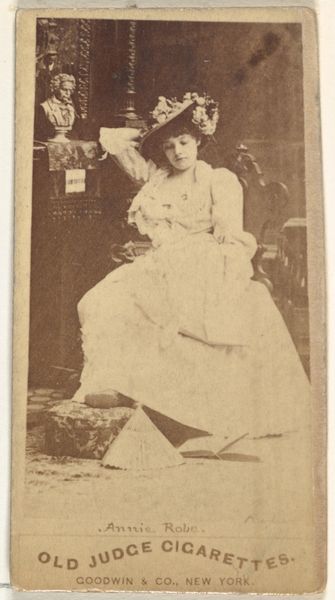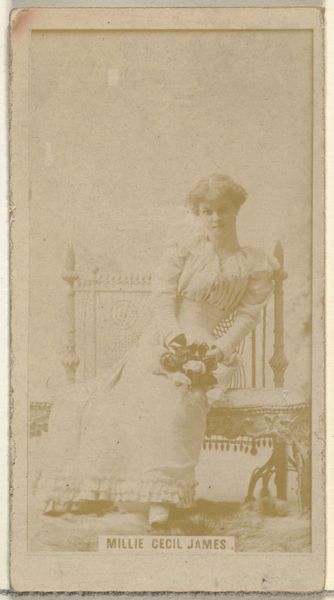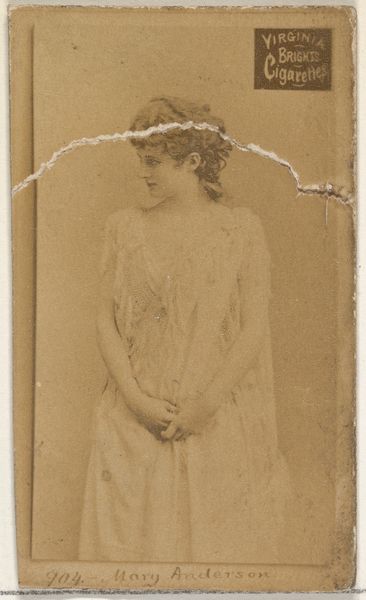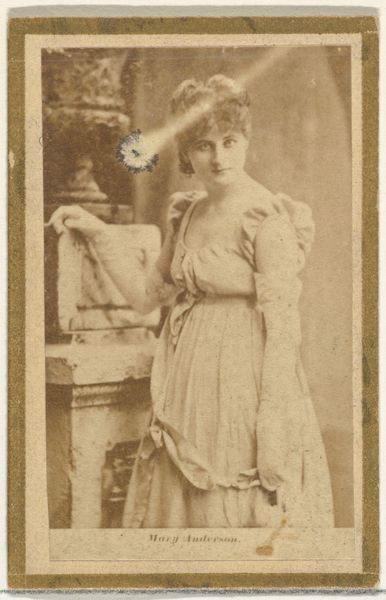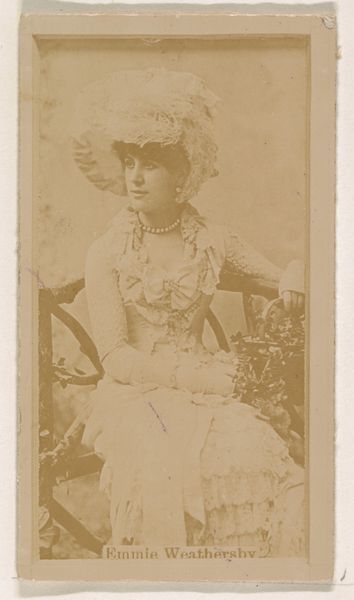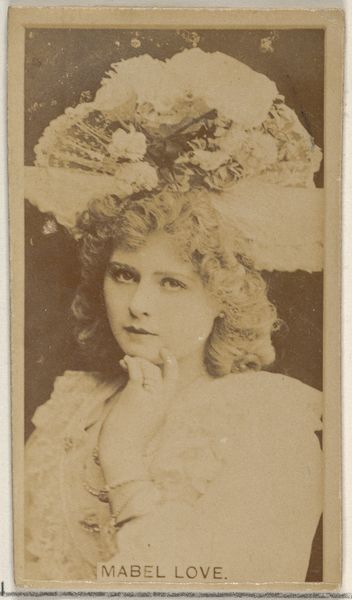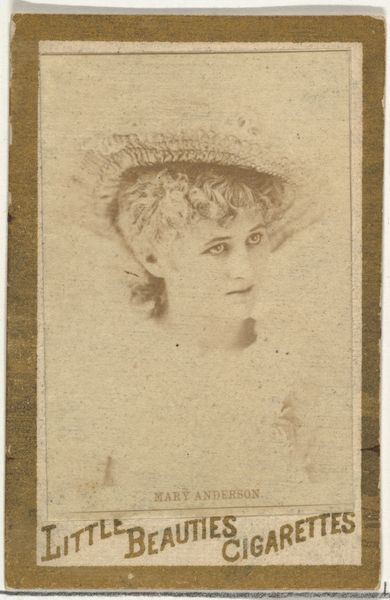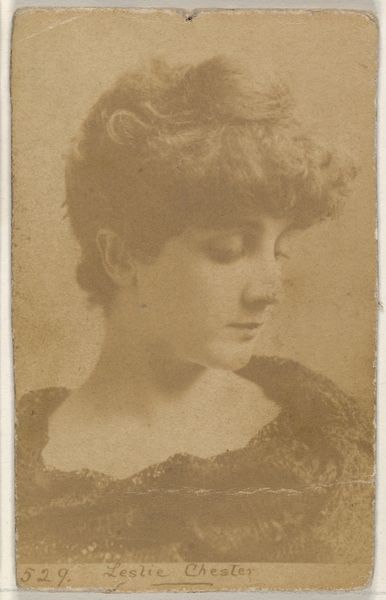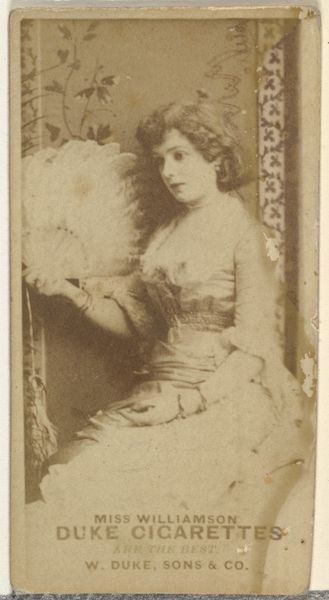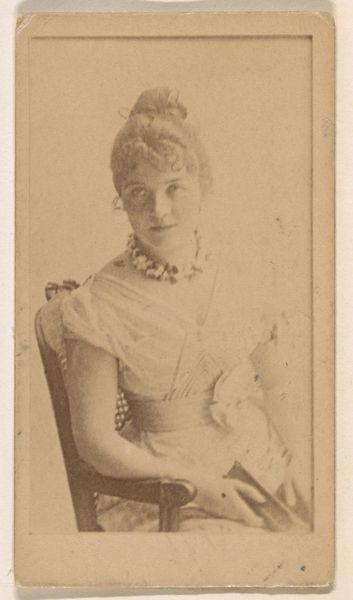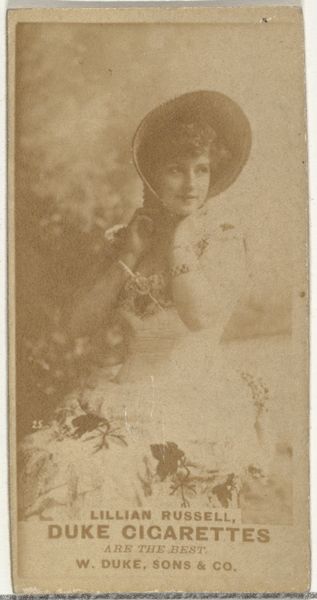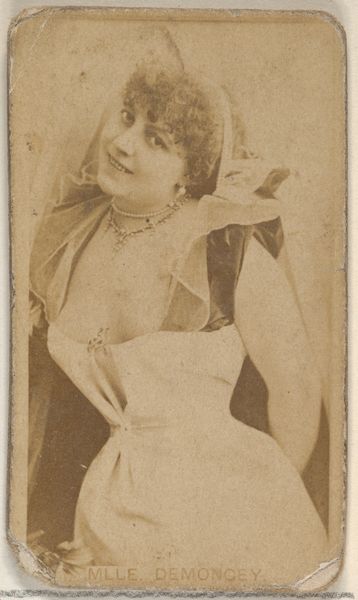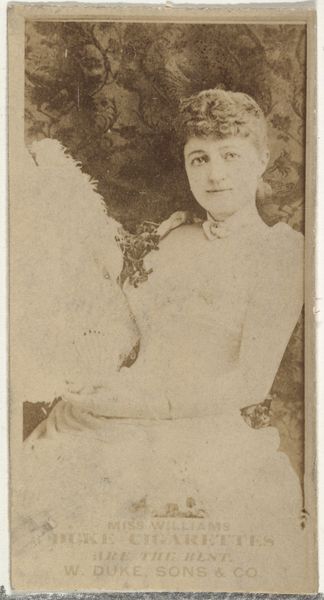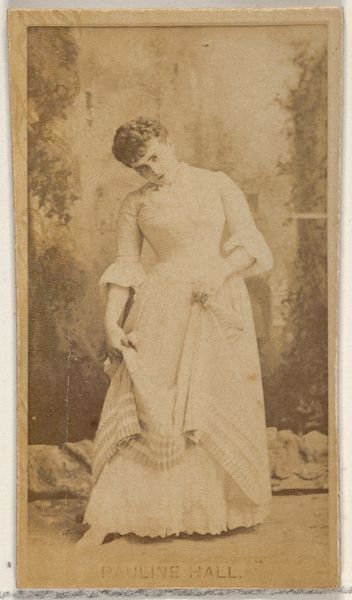
Lea D' Ascot, Paris/ Jane Hading, Paris/ Depoix, Gymnase, from the Actors and Actresses series (N45, Type 4) for Virginia Brights Cigarettes 1885 - 1891
0:00
0:00
drawing, print, paper, photography, collotype
#
portrait
#
drawing
# print
#
paper
#
photography
#
collotype
#
coloured pencil
Dimensions: Sheet: 2 3/4 x 1 3/8 in. (7 x 3.5 cm)
Copyright: Public Domain
Editor: This is "Lea D' Ascot, Paris/ Jane Hading, Paris/ Depoix, Gymnase," a print from the Actors and Actresses series made by Allen & Ginter between 1885 and 1891. It’s made of collotype, paper, and coloured pencil. The portraits, especially given their age and presentation, almost feel like relics—little windows into the past. What visual elements strike you in this composition? Curator: The piece presents a quartet of portraits arranged with a clear emphasis on symmetry and balance. Notice how each quadrant offers a slightly different pose and perspective, yet maintains a cohesive aesthetic. The soft focus of the collotype technique contributes to a unified, almost dreamlike quality across all four images. Editor: That makes sense. So you're drawn to the construction of the overall work rather than the specific historical relevance of the portraits? Curator: Precisely. The intrinsic arrangement supersedes, in my view, any contextual narrative. Consider the tonal range—limited, yet effectively rendering depth and texture within each portrait. The consistent lighting across all four panels further enhances the sense of compositional harmony. Do you find any particular tension or dissonance in the visual structure? Editor: I think the variation in how sharply defined each image is could be seen as creating some discordance. Some are a bit softer or blurrier than others, pulling my focus slightly unevenly. Curator: An astute observation. One might interpret this varied definition as adding visual interest, disrupting any risk of monotony in repetition. Ultimately, the work engages with principles of balance, rhythm, and tonal unity. Editor: I see. Thinking about it now, without that slight visual tension, the whole piece might feel static. Curator: Indeed. The visual components speak volumes about aesthetic principles and design, regardless of their original purpose. It reveals how inherent visual properties engage viewers directly. Editor: I hadn’t considered that it was less about the people depicted, and more about the artistic elements that unite these portraits. I’ll remember to consider the inherent composition. Curator: Analyzing art in terms of structure rather than history illuminates its immediate effects. I hope this discussion encourages exploration from visual structure.
Comments
No comments
Be the first to comment and join the conversation on the ultimate creative platform.

